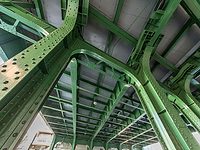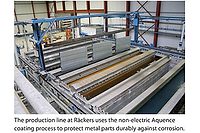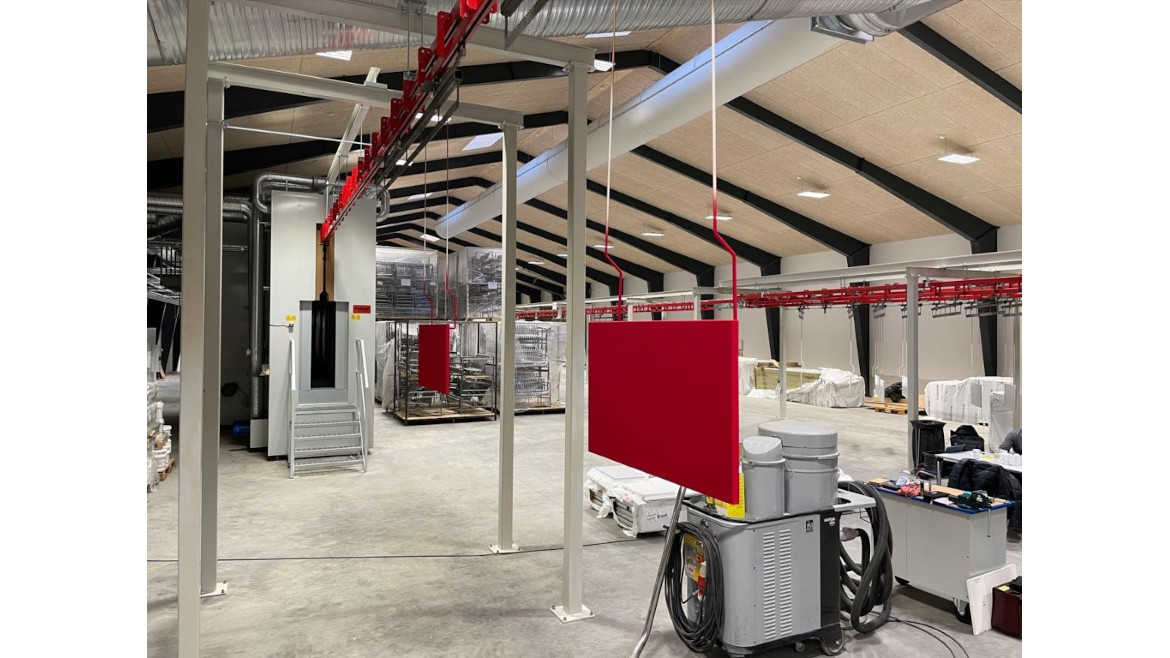Successfully Coating Non-Metallic Workpieces
A Case History


M-Line powder coating system with SuperCenter EVO and monocyclone.

Powder center SuperCenter EVO.

Powder coating of non-metallic workpieces in the M-Cube booth with support of field controllers.

Powder coating of non-metallic workpieces in the M-Cube booth with support of field controllers.





Brandt has been active in professional industrial coating for 50 years and is a leading contract coater in Denmark. The company employs around 100 people at its headquarters in Varde, Denmark. To be able to respond to diverse customer requirements, Brandt covers the entire technology spectrum, from manual coating to highly automated coating systems with liquid and powder paint. Customers include manufacturers from the wood and furniture, metal, construction, and plastics industries.
The Challenge
Brandt already has many years of experience in liquid and powder coating of metal components. However, the demand for coating sensitive substrates is steadily increasing. These include organic and mineral materials (e.g. wood-based materials or plastics), fibre cement panels, and a variety of hybrid material composites. They are processed, for example, into MDF kitchen fronts or window frames. Many of these materials have no or only very low electrical conductivity and are sometimes very temperature-sensitive.
Government environmental regulations and VOC guidelines in liquid coating are becoming increasingly restrictive. Therefore, Brandt was looking for a sustainable powder coating solution that can also be applied to sensitive substrates, materials that are traditionally liquid coated. Besides the smaller ecological footprint, another advantage of powder coating is the significant saving of resources. The surfaces are seamlessly coated, scratch-resistant, and extremely durable.
The Solution
After a careful analysis with corresponding application trials, experienced specialists from WAGNER (Ursin Huwiler, Mats Rapp, Niels Ole Larsen, Janus Wemmelund), TRIAB (a Scandinavian system house provider of powder ovens), and selected powder coating manufacturers developed a flexible system concept that was installed at Brandt at the end of 2021.
With the electrostatic M-Line powder coating system, Brandt can also offer powder coating for non-metallic substrates. Non-conductive, temperature-sensitive materials such as plastics and even in-homogeneous natural materials such as wood are powder-coated with high efficiency in a material-friendly manner. To achieve this, the coating system can process highly reactive low-temperature powders and UV powders in addition to conventional metal powders.
The M-Line system comprises ideally matched components that ensure that different powder coatings can be applied with a high degree of efficiency, even on non-conductive materials. A core element here are the suction pipes arranged laterally along the coating booth on both sides, which minimize the air flow in the coating zone. WAGNER field controllers improve the grounding of electrically low-conductive workpieces, optimize the coating thickness distribution and prevent the so-called picture frame effect. The special geometry of the piping and monocyclone reduces the pressure loss in the system and the risk of powder deposits. This so-called Energy Efficiency Package (EEP) from WAGNER reduces powder friction during recovery, which generates less heat energy. This enables gentle recirculation of the highly reactive low-temperature powder. Brandt uses the SuperCenter EVO powder center with twin sonic sieve to control the complete system technology, including automatic guns and movement units. Powder feeding and color change processes are automated and very reliable.
Pre-heating and melting processes take place in infrared ovens (IR). Curing is then carried out using either electric infrared (IR) or ultraviolet (UV) technology in the TRIAB Speedoven UV. A precise interplay of infrared radiation, convection air, and ultraviolet radiation makes it possible to completely cure extremely temperature-sensitive substrates already at below 120 °C and within 2-3 minutes.
The Customer Experience
Brandt can achieve savings in many areas. With the Energy Efficiency Package, the coating system requires up to 40% less energy than comparable systems, as a smaller fan motor is sufficient to generate the same extraction volume in the coating booth. Brandt was able to significantly improve its environmental footprint with the new powder system. Moreover, in contrast to liquid coating, no solvents are used. Thanks to the recycling of overspray powder, an enormous amount of material is saved. With the robust one-layer powder technology, which does not require any intermediate sanding, Brandt also significantly reduces manual processes. Compared to liquid coating, the throughput time per workpiece can be significantly reduced. The total time includes about one minute of pre-heating, another minute of powder coating, about five minutes of curing in the oven, followed by 20 minutes of cooling. In total, the throughput time for one circulating layer is only around 30 minutes.
For Brandt, the system offers completely new possibilities. Thanks to the very flexible overall concept, the contract coater can now successfully process a wide range of non-metallic objects and materials and can respond more flexibly to customer requests.
*All images couresty of WAGNER.
Looking for a reprint of this article?
From high-res PDFs to custom plaques, order your copy today!












